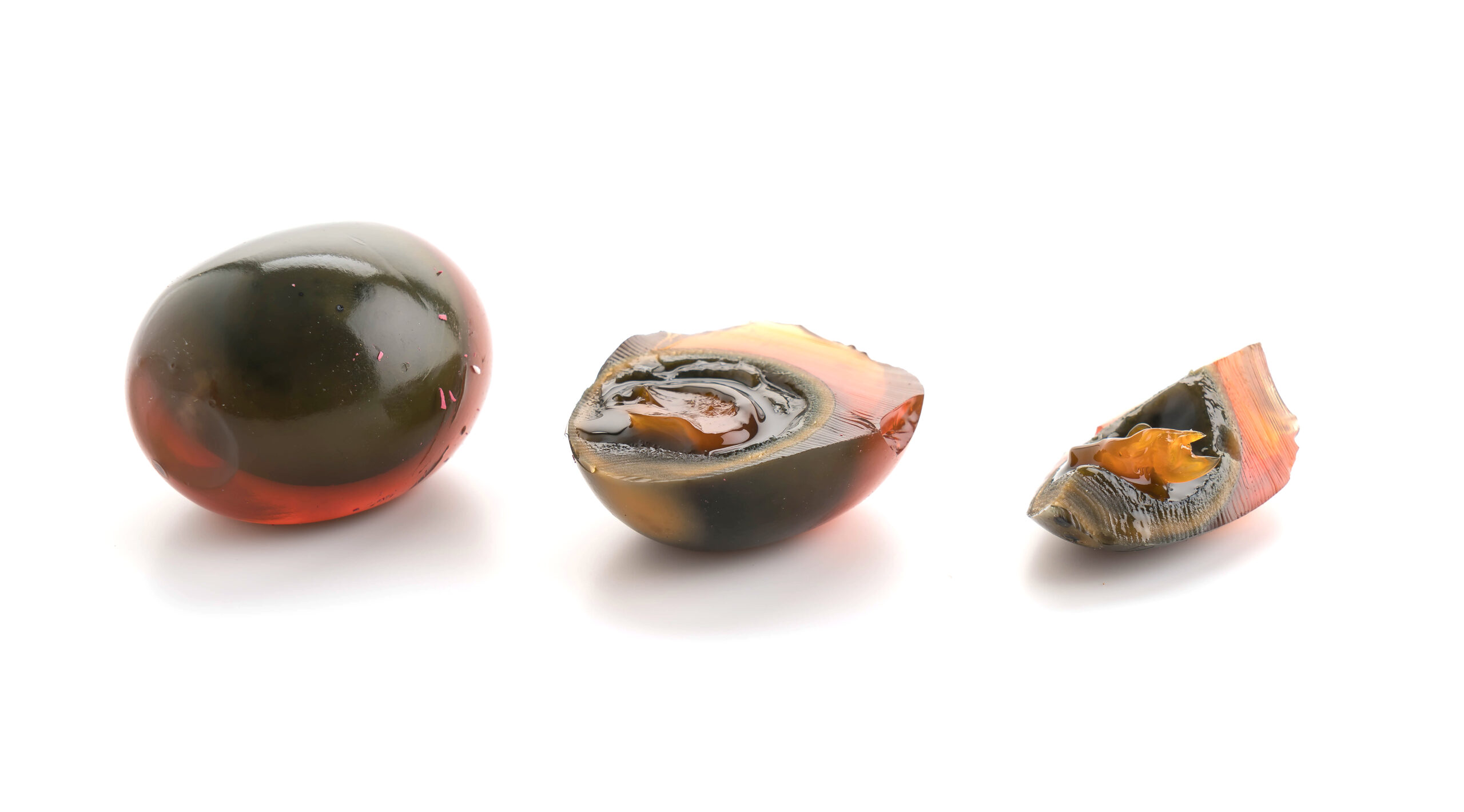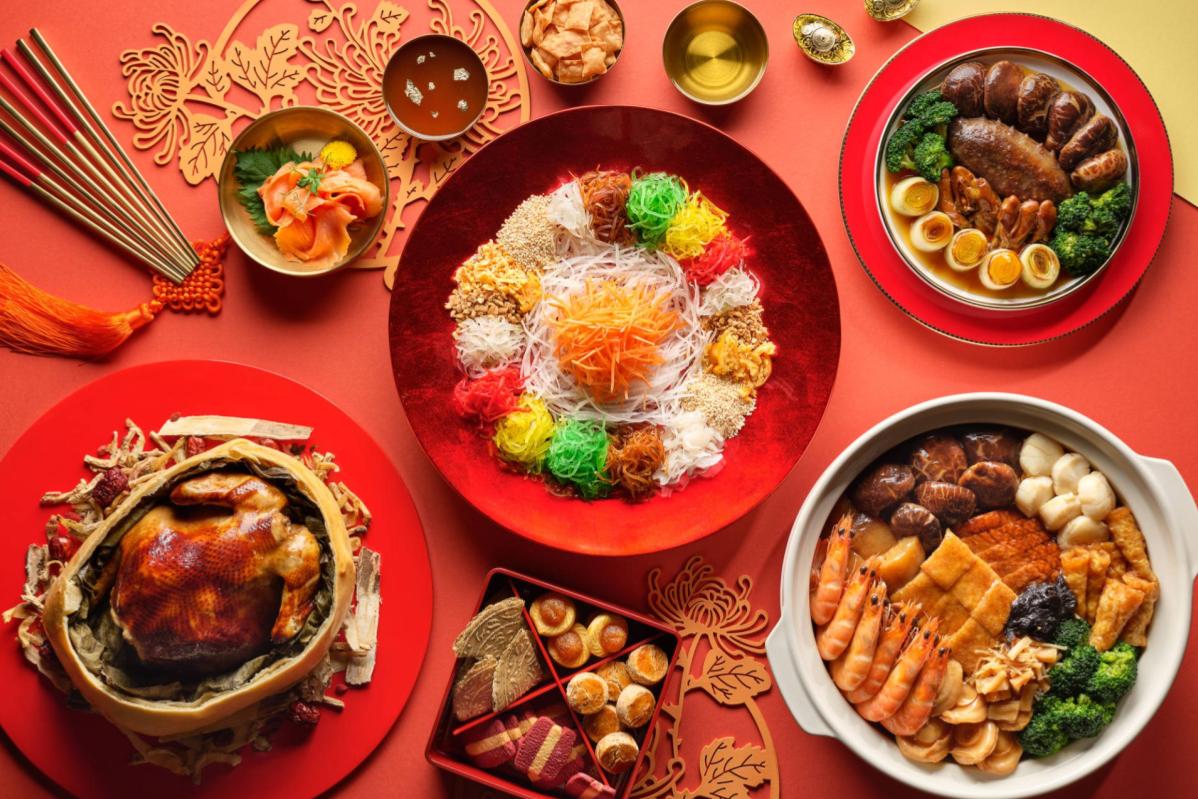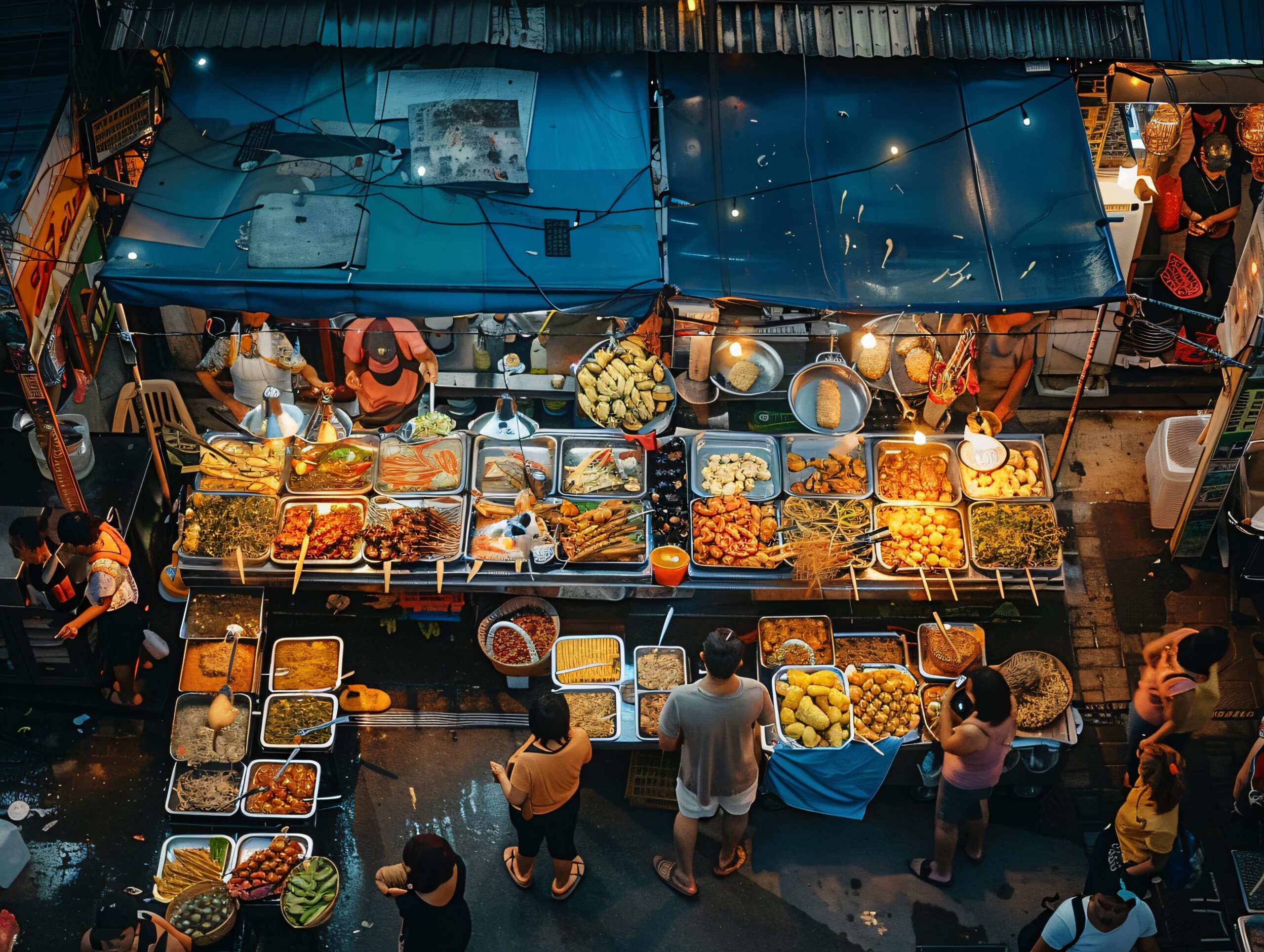DISCLAIMER: if you are someone who gets easily grossed out with images of unusual food types, proceed with caution!
Unusual street food might not be something that everyone is up for, but may be intriguing for a certain group of people looking to be more adventurous in trying new things out. Here are 4 options that are deemed unusual and can be found in some areas within the nation.
Unusual Street Food #1: Sago Worms
The weirdest and most adventurous street foods that you will enjoy in Malaysia especially in the states of Sabah and Sarawak are the sago worms, better known as butod or ulat sagu. These wriggling grubs are found inside the trunks of the sago palm tree. They boast a creamy yet nutty taste that actually gives a challenge to the palate of even the bravest food explorers.
Not as intimidating in appearance, sago worms have been a traditional delicacy among indigenous communities in Borneo for a very long period of time and have been valued both for their taste and nutritional value, being rich in protein and healthy fats. These worms can be consumed in a number of different ways, each offering something different.
Adventurous eaters most commonly consume them raw, where the living worms pop with a rich, almost buttery flavour. Those who may find them too bold to be consumed raw come grilled, deep-fried or cooked with spices. Grilling accentuates their subtle smokiness while frying coats them with a crunchy exterior that gives way to creaminess within, making them far more palatable for beginners. Others cook sago worms in a spicy sambal, adding even more kick to their earthy flavour profile.
Apart from the taste, sago worms have a certain degree of local cultural significance. They often feature in traditional feasts and ceremonies, events that underline the close relationship indigenous people maintain with their natural environment. Consuming sago worms is not merely a matter of tasting an unusual food but immersing oneself in heritage deeply entrenched in Malaysia’s biodiversity. These wriggling delicacies are a testament to the adventurous spirit of Malaysian cuisine and a promise of bold flavours, textures and cultural stories awaiting anyone who dares to be different.
Unusual Street Food #2: Century Egg

Being one of the weirder street foods in Malaysia, century egg may intrigue the more courageous and adventurous eaters. This very special delicacy is prepared by preserving the eggs of ducks, chickens, or quails in a mixture of clay, ash, lime and rice husks for many weeks or even months. This, in turn, yields an egg that is black, translucent, gelatinous and highly pungent in odour — usually driving off first-timers. The colour of the century egg turns a deep black-brown, the yolk becomes greenish-grey and when tasted, very creamy with almost a sulphuric aftertaste.
Century eggs are more often served with a dollop of tofu or pickled ginger on the side or in a porridge dish called “congee”. The bold earthy flavour of the egg creates an extreme contrast in texture to the softness of the tofu or the savoury warmth of the congee. Though the taste can be acquired, it certainly has its own following especially among the Malaysians of Chinese ethnicity where it had been consumed for centuries as a traditional dish.
@arizlufias 1 of my fav comfort food! 🤍🥚 #centuryegg
♬ 归园田居-古风原创 – 吴亦森森
But more than a novelty, century eggs are presumed to have various health benefits including facilitating digestion and providing cooling properties, highly valued in traditional medicine. Yet while the sight and smell of century eggs might offend the senses, their consumption is a rite of passage to immerse themselves in Malaysia’s diverse, sometimes fearless food culture. For the brave, this delicacy serves up a unique taste of local history, flavour and culture.
Unusual Street Food #3: Fried Insects

Fried insects are one of those unusual and bold street delicacies in Malaysia but they can be mainly found in night markets. To the adventurous eater, these crunchy critters offer a unique culinary experience that encompasses culture, adventure and sustainability. Deep-frying or roasting grasshoppers, crickets and beetles along with a spice mix will make them snacks.
While the idea of eating bugs might sound off-putting to some, they are actually fully packed with protein, vitamins and minerals and can be considered a nutritious alternative to traditional meats. The texture is crunchy and the flavour ranges from a little nutty to somewhat earthy depending on the type of insect. Vendors usually sell them on sticks or in bowls where one can select one’s favourite insects and have them served hot and crispy with a squeeze of lime or served with a side of chilli dip for flavour.
@roman.thailand $1.39 insect bag in Thailand 🪳🇹🇭 #streetfood #thailand #thaifood
♬ original sound – Roman
Although fried insects are not mainstream food for a majority of Malaysians, they do form part of the long tradition of entomophagy, which is common to most cultures in Southeast Asia. In fact, entomophagy has been part of the daily life of rural or indigenous Malaysians for centuries — common entomophagous items are grasshoppers, silkworms and many others.
For the adventurous gourmand, fried insects are not just something to be tasted but an experience in culture. It is an opportunity to step outside one’s comfort zone into foods enjoyed for generations. With the world increasingly looking to eat more sustainable, fried insects are gaining popularity because of their low environmental impact and are an option to consider for the eco-conscious foodie.
Unusual Street Food #4: Balut
Balut is a food so bold, even the most fearless of culinary daredevils would raise an eyebrow — it is a fertilised duck egg with a partially developed embryo. Hailing from the Philippines, it crossed borders and found its way into some Malaysian markets and hawker stalls especially where the cultures converge. The egg is firmer usually served warm, sprinkled with salt and pepper with the addition of a dash of vinegar to give it a more umami taste.
Of course, the challenge often lies not in the flavour but in the texture and presentation — the embryo depending on the stage of development, may have feathers and bones and be distinctly, delicately formed which can be off-putting for those that do not commonly eat such foods. But despite its intimidating appearance, balut is a delicacy for those who dare try it, treasured for its rich and savoury taste and creamy texture.
The white of the egg is firm, jelly-like and the yolk more decadent, buttery. When you eat the embryo, it adds an extra layer of richness — some say it carries the flavour of a well-seasoned chicken. It is commonly eaten as a snack or in addition to a meal, almost always accompanied by beer which has made it popular among locals for late-night munching.
For many, the experience of eating balut is about as much the thrill of embracing the unfamiliar as it is about the food itself. It is, of course, an acquired taste — for the brave trying it, balut gives a special and unforgettable gastronomic adventure in Malaysian street food culture.

Ampfood is an exceptional platform dedicated to discovering the rich and diverse culinary landscape of Malaysia. With a keen focus on food, Ampfood is your go-to resource for exploring the tantalising flavours, unique dishes and hidden gems that the Malaysian food scene has to offer.




